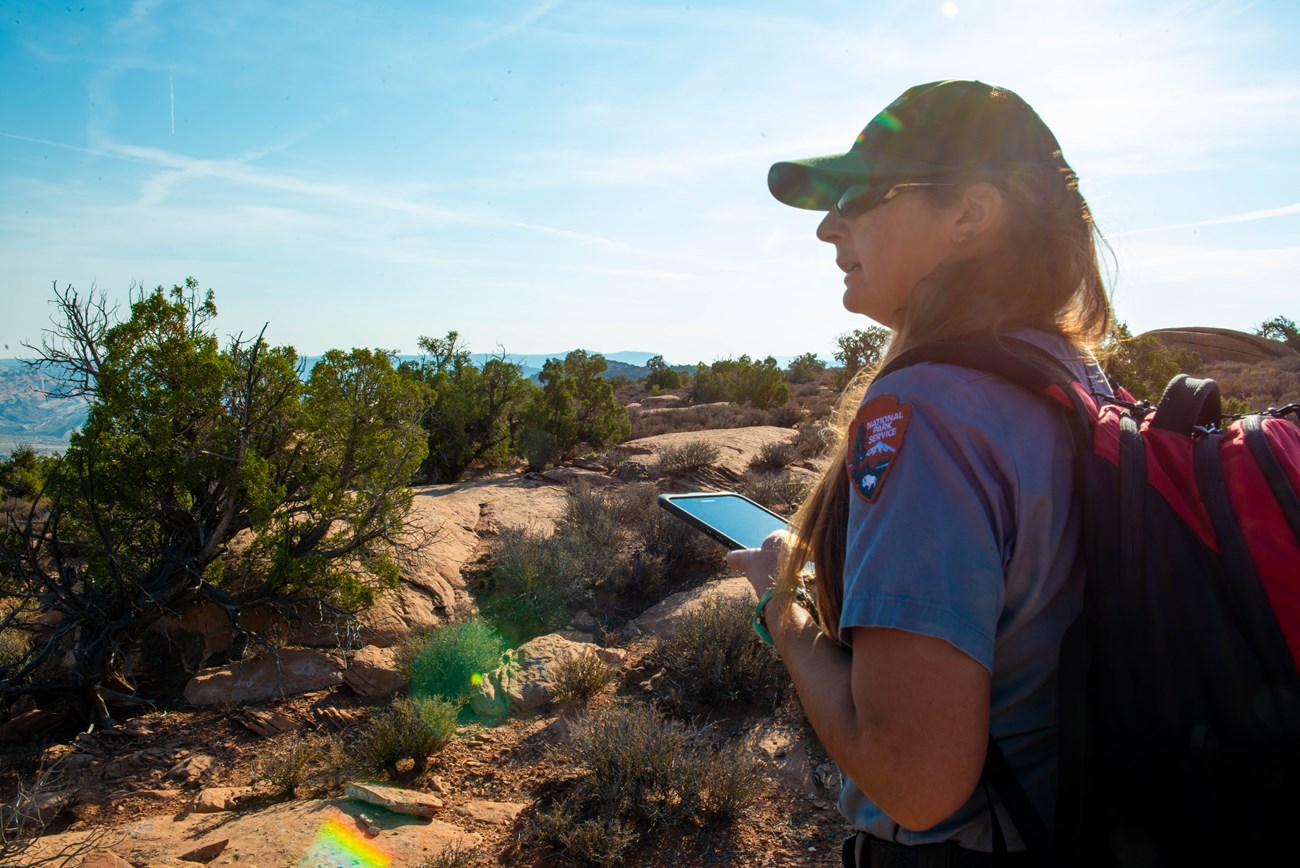
NPS/Veronica Verdin National parks protect a tremendous variety of natural and cultural wonders that provide countless opportunities for scientific research. Studying primary features at Canyonlands is only part of the picture. Since many parks prohibit activities that occur elsewhere on public and private lands (such as mining, grazing, and off-road vehicle use), they can serve as "control" areas to which scientists can compare the effects of these activities elsewhere. National parks in the American West often serve as the best model for what an undisturbed landscape should look like. Over the years, Canyonlands has served as an outdoor laboratory for a variety of scientists. Given the landscape, it is no surprise that much of this research focuses on geology and soils. From the Island in the Sky’s Upheaval Dome to the Grabens area of The Needles, Canyonlands possesses many uncommon landforms. The fact that over 200 million years of geologic history are visible in the park draws scientists from all over the world. Soil science has been a dominant research topic at Canyonlands for years. Since the 1970s, researchers have been uncovering the role biological soil crusts play in the high desert ecosystem. Since topsoil erosion and fertility have become issues of global importance, understanding the mechanisms which maintain healthy soils in deserts might benefit areas all over the world. Much of the soil research has focused on the impacts of grazing and exotic grasses, especially the invasive cheatgrass (Bromus tectorum). This European import has overcome rangeland throughout the western United States. Animals rarely eat it and it appears that native grasses cannot compete with it. Scientists at Canyonlands are studying how changes in soil chemistry affect the ability of cheatgrass to transform a landscape. Beyond the natural landscape, cultural landscapes are important features of Canyonlands. Humans have visited what is now Canyonlands for millennia. They left behind crops, artifacts, and structures that fascinate modern visitors. Cultural researchers and archeologists monitor and study historic features from American Indians, cowboys, explorers, and early tourists. The park also maintains collections and archives that help tell the story of Canyonlands National Park. Scientists have been implementing an integrated Inventory and Monitoring program. The first phase of the program is to verify records of what plants and animals exist in Canyonlands. To accomplish this, teams of scientists are conducting inventories of plants, mammals, reptiles, amphibians and birds. The second phase of the program is the development of vital signs monitoring. Vital signs are measurable, early warning signals that indicate changes which could affect the long-term health of natural systems. Canyonlands, along with other parks, is planning a program to monitor biological and physical resources like air quality, water quality, exotic species, soils, and threatened and endangered species. Research PermitsPersons wishing to conduct scientific research in any of the Southeast Utah Group of parks can apply for a research and collection permit. |
Last updated: March 8, 2024
